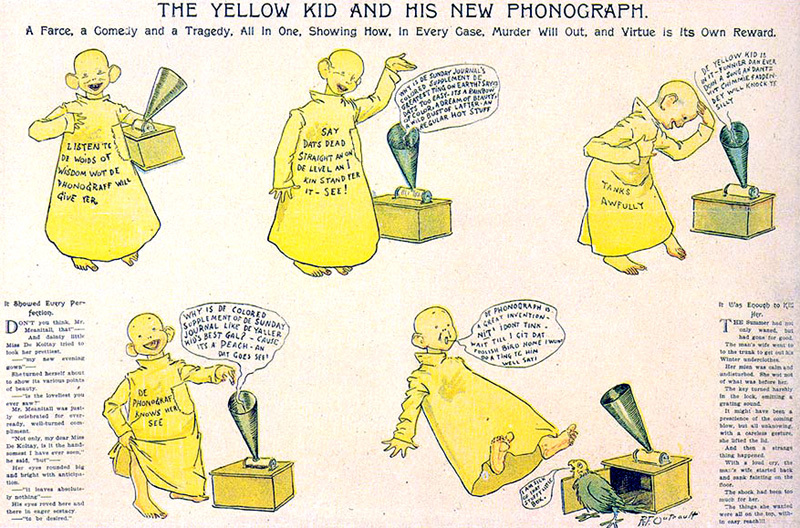質問
最終更新日:
2022年6月30日
- 日本語
-
中国語 (簡体字)
-
英語 (アメリカ)
-
フランス語 (フランス)
英語 (アメリカ) に関する質問
Now let us review a few things." Hogan's Alley," as the title implies, depicted a fictional but identical slum called Hogan's Alley each time, with the same figures appearing every week, or at least every few weeks. However, the artist never expected that a particular figure would become popular, and that fan letters for it would start pouring in. The artist's frustration with the newspaper's decision to have another artist continue "Hogan's Alley" even after his moving to another newspaper led him to the archetypal idea of a "cartoon character". Up to that point, he had only done single frames for it, but after moving to The Journal, he began to draw this type of cartoon as well simultaneously, using the same protagonist. (See A) I'm not sure how far he realized it at the time, but he named the clown kid "Yellow Kid" and recognized him as equal to a real comedian. This arose what is known today as the comic strip. In them, the same figure is depicted as a series of different pictures, with the passage of time and continuous physical movements read in and between the pictures. In other words, the artist resulted in inventing a way of generating a visual expression of the story, that is, a story in which we can read the passage of time and the continuous movement of the body in a series of different poses of the same figure. この表現は自然ですか?
Now let us review a few things." Hogan's Alley," as the title implies, depicted a fictional but identical slum called Hogan's Alley each time, with the same figures appearing every week, or at least every few weeks. However, the artist never expected that a particular figure would become popular, and that fan letters for it would start pouring in. The artist's frustration with the newspaper's decision to have another artist continue "Hogan's Alley" even after his moving to another newspaper led him to the archetypal idea of a "cartoon character". Up to that point, he had only done single frames for it, but after moving to The Journal, he began to draw this type of cartoon as well simultaneously, using the same protagonist. (See A) I'm not sure how far he realized it at the time, but he named the clown kid "Yellow Kid" and recognized him as equal to a real comedian. This arose what is known today as the comic strip. In them, the same figure is depicted as a series of different pictures, with the passage of time and continuous physical movements read in and between the pictures. In other words, the artist resulted in inventing a way of generating a visual expression of the story, that is, a story in which we can read the passage of time and the continuous movement of the body in a series of different poses of the same figure. この表現は自然ですか?

This is a paragraph of an essay I am writing about a comic strip series that was popular at the end of the nineteenth century. It was regularly published in the Sunday edition of a major New York newspaper.
回答
過去のコメントを読み込む
- 日本語
@UnknownSpecies101 THx, but it would be very helpful if you could correct it sentence by sentence so that I can learn by comparing the original and corrected text.
- 日本語
@UnknownSpecies101 No, no. I am really happy with this one. Please do that way from next time.
[お知らせ]語学を学習中のあなたへ
語学を上達させる方法を知っていますか❓それは、自分で書いた文章を添削してもらうことです!
HiNativeならAIとネイティブスピーカーの両方から添削してもらえます📝✨
HiNativeならAIとネイティブスピーカーの両方から添削してもらえます📝✨
新規登録
前後の質問

ありがとうございます!フィードバックは回答者には伝わりません。ご安心ください。
 ありがとうございます!サービスの体験向上の参考にさせていただきます。
ありがとうございます!サービスの体験向上の参考にさせていただきます。







